- Home
- Sylvia Plath
The Letters of Sylvia Plath Vol 2 Page 2
The Letters of Sylvia Plath Vol 2 Read online
Page 2
But these were my parents, which made their situation all the more harrowing for me. They were also writers, who focused and directed their experiences through words; individuals whose emotions were the driving force behind their creativity. If feeling nothing produced nothing, then they felt everything.
As a result, in reading my mother’s letters I felt to be taking part in a breath-taking – albeit one-sided – race through the evolution and collapse of a powerful love affair. It seemed to me that the spark of my parents’ first meeting ignited a fire, which then burned so brightly in the microcosmic universe they constructed for themselves that they ran out of oxygen. Suddenly, the outside world with all its temptations and the influences of others could not be held at bay, because these two people were no longer on the same side, supporting and loving each other. My mother now found my father ‘ugly’, his apparent preoccupation with Assia Wevill tearing at her like a hungry dog.
It was in this letter that my mother again wrote about her miscarriage – the miscarriage of the baby that was to have been born on my father’s birthday as already mentioned in her 27 March 1962 letter, in which she linked the miscarriage to her subsequent appendectomy. Only this time she wrote: ‘Ted beat me up physically a couple of days before my miscarriage: the baby I lost was due to be born on his birthday.’ This was the phrase that newspapers had seized upon in 2017, when several of the letters were, for a short time, visible on the internet. It was intensely painful to read this; in all my life with my father I had never seen this side of him.
What, I asked myself, would qualify as a physical beating? A push? A shove? A swipe? This assault had not warranted a mention in that earlier letter when my mother had written there was ‘No apparent reason to miscarry.’ But of course, now that the relationship was disintegrating, what woman would want to paint her exiting husband in anything other than the darkest colours? I almost laughed when I read what came next; it confirmed that context is not only important, it is vital, and it confirmed in my mind that my father was not the wife-beater that some would wish to imagine he was. My mother had written:
I thought this an aberration, & felt I had given him some cause, I had torn up some of his papers in half, so they could be taped together, not lost, in a fury that he made me a couple of hours late to work at one of the several jobs I’ve had to eke out our income when things got tight-----
I’d hazard a guess that the stickability of the two halves of my father’s papers would not have been uppermost in my mother’s mind as she tore into them. In 1962 manuscripts could not be photocopied or scanned or reprinted from a conveniently backed-up hard-drive – there was no facility for that. If work was torn up, it was torn up, and all the sticky tape in the world would not save the writer from having to retype the whole thing – pages and pages . . .
To my mind, it seemed an excessive punishment for my father’s crime, although I imagine my father’s infidelity would surely have been tied to it. My mother had hit out at the thing they both knew was most precious – typescripts of their own work.
Money, my mother wrote, was also a problem, adding, however, that although my father wanted to live his own life he would ‘send us 2/3 of what he earns’.
In the eleventh letter, dated 29 September 1962, my mother writes that she thinks she is dying; she hadn’t seen my father for two weeks and had found the love-poems my father had written about Assia. Worse still, she found herself describing them as ‘. . . fine poems. Absolute impassioned love poems . . .’ Even in the face of betrayal, the writer in her could not ignore the veracity of the work. She was lost in the face of the evidence that my father loved elsewhere. And she was frantic about money: although previously writing that my father wanted to give her the majority of his earnings she had discovered that, legally, she was entitled to only one-third. The detail she goes into describes the spiral of her mindset as it coils in upon itself.
On 26 September 1962 Ruth Beuscher had written advising divorce, if my mother truly disliked my father as she professed, but also, in a previous letter (see appropriate footnotes with the letters), had advised my mother: ‘Do not imagine that your whole being hangs on this one man . . .’ Nevertheless, my mother appeared to have done so, and was feeding her thoughts of my father and his wanton new love, giving strength to the most torturous imagery.
In her twelfth letter, dated 9 October 1962, my mother wrote of situations resolving; my father was moving out: ‘he seems to want to kill me, as he kills all he does not want.’ But this was metaphorical, not actual. He was giving her the house and the car and £1,000 a year, but this was not enough; she wanted more. She painted one scenario after another, and in all of them she was the martyr – but I don’t know if there is a woman alive who, in the same situation, wouldn’t feel that way.
She wondered if once the ‘kicking, killing passion is past, & he is free’ he may not be ‘such a bastard’. She admitted: ‘Our marriage had to go, okay.’ But she was also talking of future plans, and how and where she wanted to live – in London, with the Devon house as a holiday home. She wrote how she is ‘in my good minutes, excited about my new life’.
By the time my mother wrote her thirteenth letter to Beuscher, on 21 October 1962, she seemed to be taking a more objective view of her marriage to my father and its dissolution; she couldn’t wait to get divorced. She admitted that she had been treating him more and more like a father than a husband, ‘hating myself for it.’ After dropping him off at Exeter Station for the last time, she returned home not to misery but to ecstasy: ‘My life, my sense of identity, seemed to be flying back to me from all quarters, buried hidden places. I knew what I wanted to do, pretty much who I was, where I wanted to go, who I wanted to see . . . I was my own woman.’
Although still taking sleeping pills, my mother was now writing ferociously every morning when she woke in the early hours. Her emotions were mustered, and she was more in control. She was writing a poem a day: poems that would become Ariel, the poetry collection that, under the auspices of my father, made her name.
Her letter stated: ‘He told me openly he wished me dead . . .’ Something my father apparently said, but in what way? And what was the context? She went on to list the terrible things he’d told her, and I had to remind myself that there were two sides to this: exaggeration and hyperbole had been employed here regularly in any case, and these were two people fighting over their ending. What did she say to him? My mother would not have been without comment. So, there I was, sitting in bed, re-living the one-sided end of my parents’ marriage through my mother’s words – although it could have been any marriage, as messy and cruel as endings are. If there is no passion in the beginning, then there would be little to burn off at the end: where there is great passion, as in my parents’ case, surely there must be great pain, great argument, great rage, and great sorrow before there is great clarity?
My mother now seemed to question her previous devotion to the very domesticity that she had initially embraced: ‘I am ravenous for study, experience, travel.’ She was craving life, but wanted it made easy with more money. She also wrote that she didn’t think she could be with any one man for too long, as she liked being alone too much – being her ‘own boss’. She was already thinking beyond my father, who appeared to be rapidly sinking into the background of this new and exciting life – no more than an inconvenient anchor to something old, tired, and out of date: ‘It is as if this divorce were the key to free all my repressed energy, which is fierce from six years of boiling in a vacuum.’ In this, she might also have been describing how my father felt. She was freer, too, to admit the increased intensity of her dislike for her mother, her ‘cravenness. Her wincing fear, her martyr’s smile.’
I had got this far and found the evolution of my parents’ relationship neatly encapsulated; these letters to Dr Beuscher were an extraordinary summary of their lives together. Now I had to brace myself to read my mother’s last letter, which was written on 4 February 1963 and sent from
23 Fitzroy Road, the flat in London into which she’d moved with my brother and me only a few weeks earlier. Seven days later she took her own life.
She had read the psychologist, Erich Fromm, as a result of Dr Beuscher’s encouragement, and thought that she had been guilty of ‘Idolatrous love’. She had lost herself in my father, she wrote, instead of finding herself as she once imagined she had. There was some compassion and understanding: ‘I had a beautiful, virile, brilliant man & he still is, whatever immaturities there may be in his throwing over everything in such a violent way. He has said he is sorry for the lying, and shows concern that we get on on our own.’ I was moved by this admission, in my mind it was a counterbalance for all the fury that had gone before.
But then: ‘What appals me is the return of my madness, my paralysis, my fear & vision of the worst – cowardly withdrawal, a mental hospital, lobotomies.’ She feared this might be accentuated by seeing my father once a week when he came to visit me (she doesn’t mention my brother), because she could imagine what good friends they could be ‘if I could manage to grow up too’. Her feelings confuse her; she tries to follow Fromm’s advice for concentration, patience and faith, but keeps ‘slipping into this pit of panic and deepfreeze . . .’ She wants to ‘die and be done with it’; it is becoming too difficult to keep going, and her self-admitted defeatist thoughts are allowed free rein. She feels a ‘lack of center, of mature identity . . .’ and in the end she writes ‘I am incapable of being myself and loving myself . . .’ and that she must take Nick and me out for tea, because we are crying.
As miserable as I might feel in reading a first-hand account of the collapse of a relationship that should have seen my brother and me into adulthood, I was struck by the sensation of standing in the room with my mother; I could almost smell her. And I knew what our house and furniture looked like – I even remembered the visit from my grandmother that summer in 1962, because it changed my life (another story) in the most dramatic way.
Smith College would soon be calling me to see how I felt the letters should be handled for scholars to study; there would be no undoing the knowledge that this correspondence existed. Raw, honest, happy, exuberant, tragic and angry, these letters would sit in a library and be pored over by more strangers – the sensationalist phrases that had already leaked into the public domain would remain without context or explanation, warped and distorted by the views and impositions of other people’s agendas and theses.
This scenario, where the letters – with their private patient–psychiatrist contents – were buried, left me feeling suffocated. It would render them dumb. While my father does not come out of these letters as a saint, neither does my mother; in my view, they are both flawed and impassioned human beings and I love them more for this. They both suffered, they both made mistakes, they were going through the same kind of hell that literally thousands of other couples go through every day, and, in fact, the letters are profoundly illuminating in this respect.
Yet, in the beginning, there was great goodness and generosity, and the kind of love that some of us never find in our lifetimes. In fact, my mother’s overwhelming love for my father is expressed in every line of the sixteen letters she wrote to him in 1956 (see Volume I of these Letters) during a short period of separation. There was nothing they would not do for one another; they existed to be together, and their mutual work ethic bound them all the more tightly.
It struck me sharply that, if this book were to be published without my mother’s letters to Dr Beuscher, I would forever feel that it was unfinished. So, I decided to let people make up their own minds and, hopefully, find the kind of understanding that my mother was working towards near the end, despite the return of the ‘madness’ that took her anyway.
I telephoned Faber. There was just time.
Frieda Hughes
2018
Preface
This complete and unabridged edition of Sylvia Plath’s letters, prepared in two volumes, finally allows the author to fully narrate her own autobiography through correspondence with a combination of family, friends, and professional contacts. Plath’s epistolary style is as vivid, powerful, and complex as her poetry, prose and journal writing. While her journal entries were frequently exercises in composition, her letters often dig out the caves behind each character and situation in her life. Plath kept the interests of her addressees in mind as she crafted her letters. As a result, her voice is as varied as the more than 1,400 letters in these volumes to her more than 140 correspondents.
Plath’s first letters to her parents were written in pencil in a cursive script. She often illustrated her early letters with drawings and flourishes in colour. Later letters were either written in black ink or typed on a variety of coloured papers, greeting cards and memorandum sheets.
Most of the original letters are held by the Lilly Library, Indiana University, Bloomington, Indiana, and the William Allan Neilson Library, Smith College, Northampton, Massachusetts. Additional letters are dispersed among more than forty libraries and archives. Some letters are still in private collections.
Sylvia Plath was extremely well read and curious about all aspects of culture in the mid-twentieth century. As a result, the topics of her letters were wide-ranging, from the atomic bomb to W. B. Yeats. All phases of her development are documented in her correspondence. The most intimate details of her daily life were candidly described in letters to her mother from 1940 to 1963. (This correspondence, originally published in an abridged form by Aurelia Schober Plath as Letters Home, appears here in a complete transcription for the first time.) Plath wrote about early hobbies, such as stamp collecting, to one of her childhood friends, Margot Loungway Drekmeier. During high school, she explained the intricacies of American popular culture to a German pen pal, Hans-Joachim Neupert. There were many men in Plath’s life. To an early boyfriend, Philip McCurdy, she wrote about friendship as their romance waned. Later to some of her former Smith College roommates, such as Marcia Brown Plumer Stern, she wrote about her travels in Europe, marital relationships, motherhood, and domestic crafts. There are sixteen letters written to Ted Hughes shortly after their marriage and honeymoon, while fourteen later letters to her psychiatrist Dr Ruth Beuscher chart the disintegration of that marriage in harrowing detail. Her discussion of her own and Hughes’s poetry documents their extraordinary creative partnership. Plath’s business-related letters show a different side. Readers familiar with her journals will know she long sought publication in the New Yorker. Plath’s correspondence with several editors of the New Yorker demonstrates her efforts to satisfy concerns they had about lines, imagery, punctuation, and titles. Her submissions were not always accepted, but what arises is a healthy working relationship that routinely brought her poetry to publication. In addition to her literary development, the genesis of many poems, short stories, and novels is fully revealed in her letters. Her primary focus was always on her poetry, thrusting up from her ‘psychic ground root’.
Some memorable incidents from Plath’s life were recounted and enhanced multiple times in her letters and often found their way into her prose and poetry. She was so conscious of her audience that even when her experiences were repeated there were subtle variations of emphasis aimed to achieve a maximum response or reaction.
When Plath’s Letters Home was published in the United States in 1975 (and in the United Kingdom the following year), the edition was highly selected with unmarked editorial omissions, changes to Plath’s words, and incorrect dates assigned to some letters. Only 383 of 856 letters to her mother and family were partially published in Letters Home. By contrast, the goal of this edition of Plath’s letters is to present a complete and historically accurate text of all the known, existing letters to a full range of her correspondents. The transcriptions of the letters are as faithful to the author’s originals as possible. Plath’s final revisions are preserved and her substantive deletions and corrections are discussed in the footnotes. Plath’s spelling, capitalization, punctuation,
and grammar, as well as her errors, have been carefully transcribed and are presented without editorial comment. Original layout and page breaks, however, are not duplicated. Incredibly frugal and conscientious of the limited space available to her, Plath wrote and typed to the very edges of her paper. This was especially the case when she wrote from England on blue aerogrammes. Occasionally, punctuation marks are not present in the original letters, but are implied by the start of a new sentence or paragraph. As a result, when Plath’s intention was clear, punctuation has been added to the letter without editorial comment.
Dates for undated letters were assigned from postmarks and/or internal and external evidence and are identified with a circa date (for example, to Ann Davidow-Goodman, c. Friday 12 January 1951). In some instances where dating a letter exactly proved difficult or uncertain, we have offered either a range of days or simply the month (for example, to Mademoiselle, c. February 1955). Locations of the original manuscripts are also included in the header for each letter. Scans of drawings included in letters by Plath and photographs of her life are gathered together in the plates. Enclosures of early poems have been transcribed and included with the appropriate letter. Many of these photos and poems have never been published.

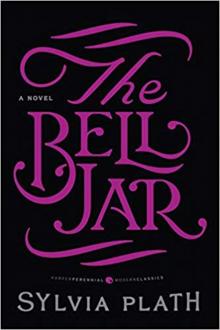 The Bell Jar
The Bell Jar Crossing the Water
Crossing the Water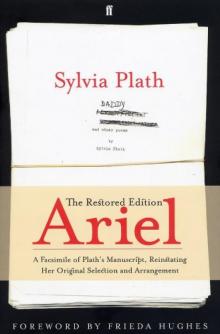 Ariel
Ariel The Colossus
The Colossus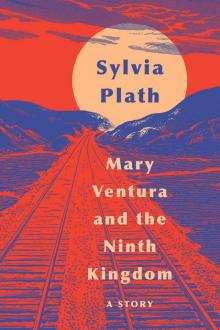 Mary Ventura and the Ninth Kingdom
Mary Ventura and the Ninth Kingdom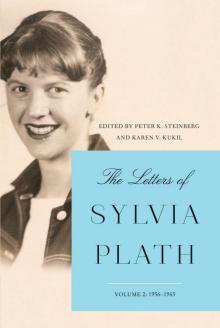 The Letters of Sylvia Plath Vol 2
The Letters of Sylvia Plath Vol 2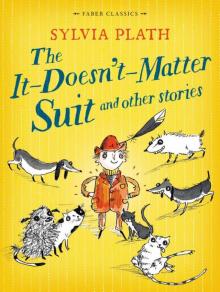 The It Doesn't Matter Suit and Other Stories
The It Doesn't Matter Suit and Other Stories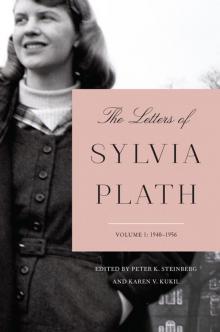 The Letters of Sylvia Plath Volume 1
The Letters of Sylvia Plath Volume 1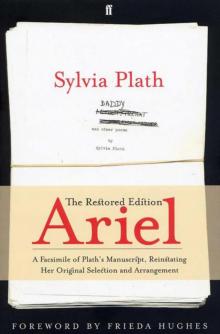 Ariel: The Restored Edition
Ariel: The Restored Edition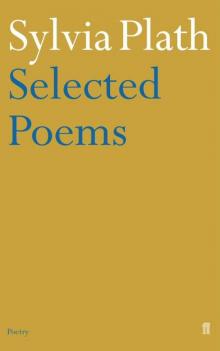 Selected Poems of Sylvia Plath
Selected Poems of Sylvia Plath